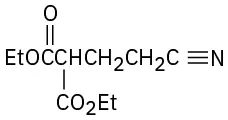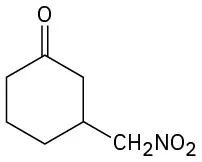23.19: Additional Problems
- Page ID
- 459783
\( \newcommand{\vecs}[1]{\overset { \scriptstyle \rightharpoonup} {\mathbf{#1}} } \)
\( \newcommand{\vecd}[1]{\overset{-\!-\!\rightharpoonup}{\vphantom{a}\smash {#1}}} \)
\( \newcommand{\id}{\mathrm{id}}\) \( \newcommand{\Span}{\mathrm{span}}\)
( \newcommand{\kernel}{\mathrm{null}\,}\) \( \newcommand{\range}{\mathrm{range}\,}\)
\( \newcommand{\RealPart}{\mathrm{Re}}\) \( \newcommand{\ImaginaryPart}{\mathrm{Im}}\)
\( \newcommand{\Argument}{\mathrm{Arg}}\) \( \newcommand{\norm}[1]{\| #1 \|}\)
\( \newcommand{\inner}[2]{\langle #1, #2 \rangle}\)
\( \newcommand{\Span}{\mathrm{span}}\)
\( \newcommand{\id}{\mathrm{id}}\)
\( \newcommand{\Span}{\mathrm{span}}\)
\( \newcommand{\kernel}{\mathrm{null}\,}\)
\( \newcommand{\range}{\mathrm{range}\,}\)
\( \newcommand{\RealPart}{\mathrm{Re}}\)
\( \newcommand{\ImaginaryPart}{\mathrm{Im}}\)
\( \newcommand{\Argument}{\mathrm{Arg}}\)
\( \newcommand{\norm}[1]{\| #1 \|}\)
\( \newcommand{\inner}[2]{\langle #1, #2 \rangle}\)
\( \newcommand{\Span}{\mathrm{span}}\) \( \newcommand{\AA}{\unicode[.8,0]{x212B}}\)
\( \newcommand{\vectorA}[1]{\vec{#1}} % arrow\)
\( \newcommand{\vectorAt}[1]{\vec{\text{#1}}} % arrow\)
\( \newcommand{\vectorB}[1]{\overset { \scriptstyle \rightharpoonup} {\mathbf{#1}} } \)
\( \newcommand{\vectorC}[1]{\textbf{#1}} \)
\( \newcommand{\vectorD}[1]{\overrightarrow{#1}} \)
\( \newcommand{\vectorDt}[1]{\overrightarrow{\text{#1}}} \)
\( \newcommand{\vectE}[1]{\overset{-\!-\!\rightharpoonup}{\vphantom{a}\smash{\mathbf {#1}}}} \)
\( \newcommand{\vecs}[1]{\overset { \scriptstyle \rightharpoonup} {\mathbf{#1}} } \)
\( \newcommand{\vecd}[1]{\overset{-\!-\!\rightharpoonup}{\vphantom{a}\smash {#1}}} \)
\(\newcommand{\avec}{\mathbf a}\) \(\newcommand{\bvec}{\mathbf b}\) \(\newcommand{\cvec}{\mathbf c}\) \(\newcommand{\dvec}{\mathbf d}\) \(\newcommand{\dtil}{\widetilde{\mathbf d}}\) \(\newcommand{\evec}{\mathbf e}\) \(\newcommand{\fvec}{\mathbf f}\) \(\newcommand{\nvec}{\mathbf n}\) \(\newcommand{\pvec}{\mathbf p}\) \(\newcommand{\qvec}{\mathbf q}\) \(\newcommand{\svec}{\mathbf s}\) \(\newcommand{\tvec}{\mathbf t}\) \(\newcommand{\uvec}{\mathbf u}\) \(\newcommand{\vvec}{\mathbf v}\) \(\newcommand{\wvec}{\mathbf w}\) \(\newcommand{\xvec}{\mathbf x}\) \(\newcommand{\yvec}{\mathbf y}\) \(\newcommand{\zvec}{\mathbf z}\) \(\newcommand{\rvec}{\mathbf r}\) \(\newcommand{\mvec}{\mathbf m}\) \(\newcommand{\zerovec}{\mathbf 0}\) \(\newcommand{\onevec}{\mathbf 1}\) \(\newcommand{\real}{\mathbb R}\) \(\newcommand{\twovec}[2]{\left[\begin{array}{r}#1 \\ #2 \end{array}\right]}\) \(\newcommand{\ctwovec}[2]{\left[\begin{array}{c}#1 \\ #2 \end{array}\right]}\) \(\newcommand{\threevec}[3]{\left[\begin{array}{r}#1 \\ #2 \\ #3 \end{array}\right]}\) \(\newcommand{\cthreevec}[3]{\left[\begin{array}{c}#1 \\ #2 \\ #3 \end{array}\right]}\) \(\newcommand{\fourvec}[4]{\left[\begin{array}{r}#1 \\ #2 \\ #3 \\ #4 \end{array}\right]}\) \(\newcommand{\cfourvec}[4]{\left[\begin{array}{c}#1 \\ #2 \\ #3 \\ #4 \end{array}\right]}\) \(\newcommand{\fivevec}[5]{\left[\begin{array}{r}#1 \\ #2 \\ #3 \\ #4 \\ #5 \\ \end{array}\right]}\) \(\newcommand{\cfivevec}[5]{\left[\begin{array}{c}#1 \\ #2 \\ #3 \\ #4 \\ #5 \\ \end{array}\right]}\) \(\newcommand{\mattwo}[4]{\left[\begin{array}{rr}#1 \amp #2 \\ #3 \amp #4 \\ \end{array}\right]}\) \(\newcommand{\laspan}[1]{\text{Span}\{#1\}}\) \(\newcommand{\bcal}{\cal B}\) \(\newcommand{\ccal}{\cal C}\) \(\newcommand{\scal}{\cal S}\) \(\newcommand{\wcal}{\cal W}\) \(\newcommand{\ecal}{\cal E}\) \(\newcommand{\coords}[2]{\left\{#1\right\}_{#2}}\) \(\newcommand{\gray}[1]{\color{gray}{#1}}\) \(\newcommand{\lgray}[1]{\color{lightgray}{#1}}\) \(\newcommand{\rank}{\operatorname{rank}}\) \(\newcommand{\row}{\text{Row}}\) \(\newcommand{\col}{\text{Col}}\) \(\renewcommand{\row}{\text{Row}}\) \(\newcommand{\nul}{\text{Nul}}\) \(\newcommand{\var}{\text{Var}}\) \(\newcommand{\corr}{\text{corr}}\) \(\newcommand{\len}[1]{\left|#1\right|}\) \(\newcommand{\bbar}{\overline{\bvec}}\) \(\newcommand{\bhat}{\widehat{\bvec}}\) \(\newcommand{\bperp}{\bvec^\perp}\) \(\newcommand{\xhat}{\widehat{\xvec}}\) \(\newcommand{\vhat}{\widehat{\vvec}}\) \(\newcommand{\uhat}{\widehat{\uvec}}\) \(\newcommand{\what}{\widehat{\wvec}}\) \(\newcommand{\Sighat}{\widehat{\Sigma}}\) \(\newcommand{\lt}{<}\) \(\newcommand{\gt}{>}\) \(\newcommand{\amp}{&}\) \(\definecolor{fillinmathshade}{gray}{0.9}\)Visualizing Chemistry
(b)
The following structure represents an intermediate formed by addition of an ester enolate ion to a second ester molecule. Identify the reactant, the leaving group, and the product.

The following molecule was formed by an intramolecular aldol reaction. What dicarbonyl precursor was used for its preparation?

The following molecule was formed by an intramolecular aldol reaction. What dicarbonyl precursor was used for its preparation?
The following molecule was formed by a Robinson annulation reaction. What reactants were used?
Mechanism Problems
 (b)
(b)

Problem 23-28
Based on your answers to Problem 23-27, predict the dehydration product for both reactions and write the mechanism. (b)
(b)

Problem 23-30
Predict the product(s) and provide the mechanisms for the following reactions.
(a)
 (b)
(b)

Problem 23-31
Predict the product(s) and provide the mechanisms for the following reactions.
(a)
 (b)
(b)

Problem 23-32
Knoevenagel condensation is a reaction involving an active methylene compound (a CH2 flanked by two electron-withdrawing groups) and an aldehyde and ketone. Propose a mechanism for the reaction below.
Azlactones are important starting materials used in the synthesis of dehydro α-aminoacids. They react with aldehydes to form an intermediate that is hydrolyzed under acidic conditions to give the final amino acid product. Provide the structure of the intermediate and propose a mechanism for its formation.
Leucine, one of the twenty amino acids found in proteins, is metabolized by a pathway that includes the following step. Propose a mechanism.
Isoleucine, another of the twenty amino acids found in proteins, is metabolized by a pathway that includes the following step. Propose a mechanism.
The first step in the citric acid cycle of food metabolism is reaction of oxaloacetate with acetyl CoA to give citrate. Propose a mechanism, using acid or base catalysis as needed.
The amino acid leucine is biosynthesized from α-ketoisovalerate by the following sequence of steps. Show the mechanism of each.
The Knoevenagel reaction was introduced in Problem 23-2. Show the mechanism for the Knoevenagel reaction of diethyl malonate with benzaldehyde.
The Darzens reaction involves a two-step, base-catalyzed condensation of ethyl chloroacetate with a ketone to yield an epoxy ester. The first step is a carbonyl condensation reaction, and the second step is an SN2 reaction. Write both steps, and show their mechanisms.
The following reaction involves a hydrolysis followed by an intramolecular nucleophilic acyl substitution reaction. Write both steps, and show their mechanisms.
The following reaction involves an intramolecular Michael reaction followed by an intramolecular aldol reaction. Write both steps, and show their mechanisms.
The following reaction involves a conjugate addition reaction followed by an intramolecular Claisen condensation. Write both steps, and show their mechanisms.
The following reaction involves an intramolecular aldol reaction followed by a retro aldol-like reaction. Write both steps, and show their mechanisms.
Propose a mechanism for the following base-catalyzed isomerization:
The Mannich reaction of a ketone, an amine, and an aldehyde is one of the few three-component reactions in organic chemistry. Cyclohexanone, for example, reacts with dimethylamine and acetaldehyde to yield an amino ketone. The reaction takes place in two steps, both of which are typical carbonyl-group reactions.
 (a)
(a)
The first step is reaction between the aldehyde and the amine to yield an intermediate iminium ion (R2CNR2+) plus water. Propose a mechanism, and show the structure of the intermediate iminium ion.Cocaine has been prepared by a sequence beginning with a Mannich reaction (Problem 23-45) between dimethyl acetonedicarboxylate, an amine, and a dialdehyde. Show the structures of the amine and dialdehyde.
Propose a mechanism to account for the following reaction of an enamine with an alkyl halide:
Aldol Reactions
Which of the following compounds would you expect to undergo aldol self-condensation? Show the product of each successful reaction.
(a) Trimethylacetaldehyde (b) Cyclobutanone (c) Benzophenone (diphenyl ketone)
(d) 3-Pentanone (e) Decanal (f) 3-Phenyl-2-propenal
 (b)
(b)
 (c)
(c)
 (d)
(d)

What product would you expect to obtain from aldol cyclization of hexanedial, OHCCH2CH2CH2CH2CHO?
Intramolecular aldol cyclization of 2,5-heptanedione with aqueous NaOH yields a mixture of two enone products in the approximate ratio 9 : 1. Write their structures, and show how each is formed.
The major product formed by intramolecular aldol cyclization of 2,5-heptanedione (Problem 23-51) has two singlet absorptions in the 1H NMR spectrum, at 1.65 δ and 1.90 δ, and has no absorptions in the range 3 to 10 δ. What is its structure?
Treatment of the minor product formed in the intramolecular aldol cyclization of 2,5-heptanedione (Problems 23-51 and 23-52) with aqueous NaOH converts it into the major product. Propose a mechanism to account for this base-catalyzed isomerization.
How can you account for the fact that 2,2,6-trimethylcyclohexanone yields no detectable aldol product even though it has an acidic α hydrogen?
The aldol reaction is catalyzed by acid as well as base. What is the reactive nucleophile in the acid-catalyzed aldol reaction? Propose a mechanism.
Cinnamaldehyde, the aromatic constituent of cinnamon oil, can be synthesized by a mixed aldol condensation. Show the starting materials you would use, and write the reaction.

What product would you expect to obtain from aldol cyclization of hexanedial, OHCCH2CH2CH2CH2CHO?
Intramolecular aldol cyclization of 2,5-heptanedione with aqueous NaOH yields a mixture of two enone products in the approximate ratio 9 : 1. Write their structures, and show how each is formed.
The major product formed by intramolecular aldol cyclization of 2,5-heptanedione (Problem 23-51) has two singlet absorptions in the 1H NMR spectrum, at 1.65 δ and 1.90 δ, and has no absorptions in the range 3 to 10 δ. What is its structure?
Treatment of the minor product formed in the intramolecular aldol cyclization of 2,5-heptanedione (Problems 23-51 and 23-52) with aqueous NaOH converts it into the major product. Propose a mechanism to account for this base-catalyzed isomerization.
How can you account for the fact that 2,2,6-trimethylcyclohexanone yields no detectable aldol product even though it has an acidic α hydrogen?
The aldol reaction is catalyzed by acid as well as base. What is the reactive nucleophile in the acid-catalyzed aldol reaction? Propose a mechanism.
Cinnamaldehyde, the aromatic constituent of cinnamon oil, can be synthesized by a mixed aldol condensation. Show the starting materials you would use, and write the reaction.
The following bicyclic ketone does not undergo aldol self-condensation even though it has two α hydrogen atoms. Explain.
Claisen Condensations
CH3CO2Et + CH3CH2CO2Et
In the mixed Claisen reaction of cyclopentanone with ethyl formate, a much higher yield of the desired product is obtained by first mixing the two carbonyl components and then adding base, rather than by first mixing base with cyclopentanone and then adding ethyl formate. Explain.
Ethyl dimethylacetoacetate reacts instantly at room temperature when treated with ethoxide ion to yield two products, ethyl acetate and ethyl 2-methylpropanoate. Propose a mechanism for this cleavage reaction.
In contrast to the rapid reaction shown in Problem 23-60, ethyl acetoacetate requires a temperature over 150 °C to undergo the same kind of cleavage reaction. How can you explain the difference in reactivity?
Michael and Enamine Reactions
 (b)
(b)
 (c)
(c)
 (d)
(d)
 (e)
(e)
 (f)
(f)

The so-called Wieland–Miescher ketone is a valuable starting material used in the synthesis of steroid hormones. How might you prepare it from 1,3-cyclohexanedione?

The so-called Wieland–Miescher ketone is a valuable starting material used in the synthesis of steroid hormones. How might you prepare it from 1,3-cyclohexanedione?
The Stork enamine reaction and the intramolecular aldol reaction can be carried out in sequence to allow the synthesis of cyclohexenones. For example, reaction of the pyrrolidine enamine of cyclohexanone with 3-buten-2-one, followed by enamine hydrolysis and base treatment, yields the product indicated. Write each step, and show the mechanism of each.
 (b)
(b)
![Structure of a bicyclo[4.4.0]decane with double bond C 1 to C 2, oxo on C 3, methyl on C 10.](https://chem.libretexts.org/@api/deki/files/458544/5a68a0038d77eb796717f0b7f16162226449f3ed?revision=1) (c)
(c)

Problem 23-66
The following reaction involves two successive intramolecular Michael reactions. Write both steps, and show their mechanisms.
General Problems
Ethyl butanoate
 (b)
(b)
 (c)
(c)

Fill in the missing reagents a–h in the following scheme:

Fill in the missing reagents a–h in the following scheme:
 (b)
(b)
 (c)
(c)
 (d)
(d)

Problem 23-71
The compound known as Hagemann’s ester is prepared by treatment of a mixture of formaldehyde and ethyl acetoacetate with base, followed by acid-catalyzed decarboxylation.
 (a)
(a)
The first step is an aldol-like condensation between ethyl acetoacetate and formaldehyde to yield an α,β-unsaturated product. Write the reaction, and show the structure of the product.The third and fourth steps in the synthesis of Hagemann’s ester from ethyl acetoacetate and formaldehyde (Problem 23-71) are an intramolecular aldol cyclization to yield a substituted cyclohexenone, and a decarboxylation reaction. Write both reactions, and show the products of each step.
When 2-methylcyclohexanone is converted into an enamine, only one product is formed despite the fact that the starting ketone is unsymmetrical. Build molecular models of the two possible products and explain the fact that the sole product is the one with the double bond opposite the methyl-substituted carbon.


